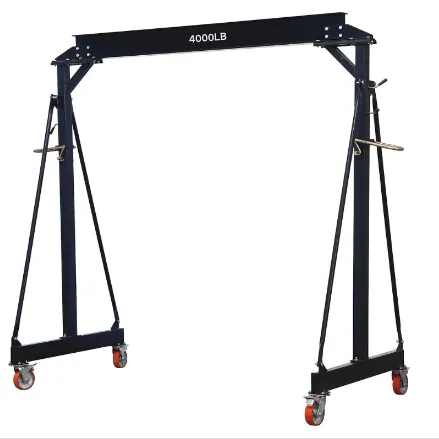portal gantries
Portal Gantries A Technological Marvel for Modern Infrastructure
In the age of rapid technological advancement, infrastructure plays a crucial role in supporting urban growth and improving efficiency in transportation systems. Among the myriad innovations, portal gantries stand out as a vital component, revolutionizing the way we manage road traffic, construction projects, and various industrial applications. Defined as robust frameworks that support signage, lights, or sensors above roadways, portal gantries have emerged as key structures in enhancing safety and efficiency in transportation networks.
The Basics of Portal Gantries
Portal gantries are typically constructed from steel or aluminum and are designed to span across roads or railway tracks, providing a platform for traffic control devices and other essential infrastructure elements. Their design allows for easy installation and maintenance, ensuring that they can be adapted to fit varied environments, from bustling urban centers to remote construction sites.
One of their primary functions is to hold traffic control signs and signals at a height that ensures maximum visibility for approaching drivers. This feature is particularly beneficial in complex junctions or high-speed roadways, where clear visibility is paramount for ensuring safe driving conditions. By providing clear direction, these gantries help reduce the likelihood of accidents and improve overall traffic flow.
Enhancing Traffic Management
Traffic congestion remains a significant challenge in cities worldwide, leading to increased travel times and environmental pollution. Portal gantries equip cities with advanced traffic monitoring systems that can inform drivers of current road conditions, including real-time updates on accidents or delays. Integrated with sensors and cameras, these systems collect data that can be analyzed to optimize traffic light timings and manage vehicle flows more effectively.
Additionally, portal gantries are often used in conjunction with variable message signs (VMS), allowing authorities to convey critical information directly to motorists. For instance, during peak hours or unexpected incidents, messages can be displayed to redirect traffic, thus alleviating congestion and preventing gridlocks. This dynamic capability not only streamlines traffic management but also enhances the overall experience of road users.
portal gantries

Applications Beyond Roadways
While primarily associated with road traffic, the applications of portal gantries extend beyond just vehicular management. In the construction industry, these structures are vital for supporting safety signage around work zones, ensuring that both workers and passing motorists are adequately informed of any hazards. Their modular design allows for easy relocation, making them ideal for temporary installations during construction or maintenance activities.
Moreover, portal gantries are increasingly used in railway systems to support signals and overhead wires, facilitating the smooth operation of trains and enhancing rail safety. This versatility ensures that as technology and societal needs evolve, portal gantries can be adapted to meet those changing demands.
Future Trends and Innovations
Looking ahead, the future of portal gantries is poised for innovation, particularly with the advent of smart city technologies. As autonomous vehicles and connected infrastructure become more mainstream, portal gantries will likely incorporate more advanced features, such as integration with vehicle communication systems. This evolution promises to enhance traffic safety and efficiency even further, with gantries potentially communicating directly with vehicles to provide real-time updates and warnings.
In addition, environmental considerations are driving the development of more sustainable gantry designs. Using recycled materials and energy-efficient lighting systems, future portal gantries could contribute to broader sustainability goals within urban planning and infrastructure development.
Conclusion
Portal gantries represent a significant advancement in modern infrastructure, playing a critical role in improving traffic management, enhancing safety, and accommodating various applications across industries. As cities strive for smarter, more efficient systems, the importance of these structures will only grow. With ongoing innovations and adaptations, portal gantries will undoubtedly continue to be a cornerstone of modern transportation infrastructure for years to come.
-
Unlock Seamless Relocation with Our Heavy Equipment Moving ExpertiseNewsJun.06,2025
-
Unleash Unrivaled Flexibility with Our Adjustable Gantry CraneNewsJun.06,2025
-
Unleash Heavy-Duty Efficiency with Our Industrial Gantry Crane SolutionsNewsJun.06,2025
-
Revolutionize Steel Handling with Our Magnetic Lifter RangeNewsJun.06,2025
-
Master Equipment Mobility with Premium Machinery Mover SolutionsNewsJun.06,2025
-
Elevate Your Material Handling with Magnetic Lifter TechnologyNewsJun.06,2025
-
YS Permanent Lifting Magnets: The Smarter Way to Handle SteelNewsMay.22,2025
